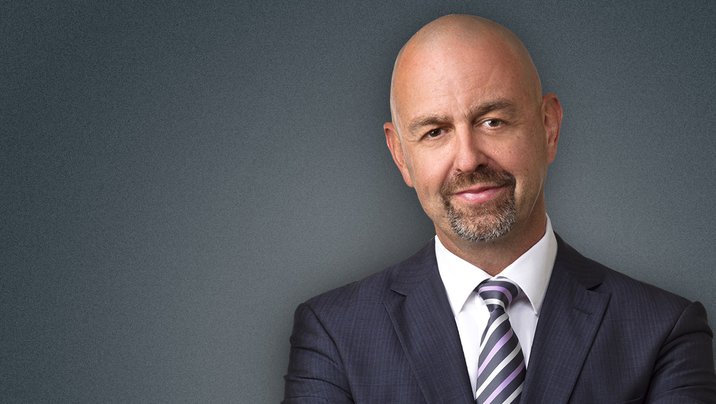Sales teams have never really been 'teams'……just individuals working autonomously under the same corporate structure.
The role of the professional salesperson has always been a multifaceted role requiring a diverse range of skills. For more than 125 years, vendors have allowed ‘autonomous agents’ (sales people) to effectively ‘own and operate’ an entire territory, or set of accounts, regardless of their skill-set, knowledge or experience........and this strange legacy practice is now out of step with the new realities of today’s rapidly changing global markets. Let me explain why:
Broadly speaking, B2B sales people are under more pressure than ever before and sales conversion rates have never been lower. As markets continue to mature, there are often too many competitors (both known and unknown) to simply rely on a single sales person to execute all the competencies and decision making necessary to compete successfully within this context. Sales roles average length of tenure is getting shorter as vendors consolidate and jostle for increasingly hard to get customers.
The principle of ‘division of labour’ is applied to practically every business function (manufacturing, finance, marketing etc) except, strangely, to sales. As we all know, the division of labour helps to increase the efficiency of workers due to two reasons. First, every worker is assigned a job that suits his skills, experience, training and aptitude. Right person in the right job leads to higher output. Secondly, due to division of labour, a worker continuously repeats his/her work which helps them to become an expert in performing the task. Repetition of the same work improves skills and execution, and in today's’ competitive sales world this is now a must.
And yet, to this day, the same tired and outdated B2B sales models are still being used in sales departments throughout the world. This cannot continue, and I personally have no doubt that all vendors will be forced to gradually embrace performance management strategies that enable each sales person to optimize their individual strengths, whilst also avoiding activity that exposes their weaknesses. Where is the logic in allowing your worst ‘presenter’ to deliver a critical presentation to an important client simply because it is his or her territory?
I have seen this happen many times in my career and it nearly always costs the vendor……whilst simultaneously assisting your competitors. It’s ridiculous when you think about it.
Team-Based Selling
Sporting teams are continuously striving for any means by which they can maximise the strengths of individuals to create a small percentage gain in team execution or competitive advantage. And yet sales teams (which are not teams at all) still ask each individual to play every role on game day. Would you play someone at quarter back if they had poor arm strength? No, then why do sales leaders do exactly this….ask sales individuals to perform each and every role when they could quite easily leverage other team members for improved execution. The traditional autonomous ‘lone wolfs’ simply cannot be expected to perform each and every task optimally and that is why this model is no longer sustainable. Many of today's’ advanced vendors are now creating centrally coordinated teams, where a more holistic approach to the account (both pre & postsale) can be facilitated.
Furthermore, if we agree with the concept that individual sales people are increasingly unable to attain ‘trusted advisor’ status with their customers, then why not try to leverage all the skills and knowledge available from within the team? Wouldn't your customers value this combined insight and experience? Of course they would, and this means creating a hit-squad that can develop a coordinated approach in demonstrating real value to customers at the key stages throughout the buying journey.
In my last role, my team and I decided upon some simple parameters in this regard; we agreed that any sales opportunities above a certain revenue level would invoke some subtle changes in team composition and resource allocation at certain key points throughout the sales process. This was done simply to maximize our strengths through more intelligent coordination of resources whilst at the same time limiting areas of weakness. Intuitively this concept made sense to all members of my team however, nothing is ever as simple as it first appears when it comes to sales transformation. This type of restructuring/change is difficult primarily because of the challenges that it creates with team composition, performance assessments and sales force compensation among other things. However, where there is a will, there is a way, and sales leaders must constantly challenge the status-quo and search for new productivity gains.
I can see no alternative future for vendor sales than one that involves a much greater degree of team-based selling. The successful vendors of the future will put their best ‘team’ on the park for every important sale……
Where to start:
- Review and analyse your sales team composition and current capabilities. Develop a skills matrix to clearly identify capability boundaries and gaps (or weaknesses) in capability.
- Frame the perfect sale – create a hypothetical sales opportunity for each product offering that brings together the optimal skill sets from across your current sales team at the critical points in the sales cycle. Use this hypothetical model to inform the division of labour and possible team-based selling scenarios.
- Review your sales force compensation plans against this team-based approach to selling, and begin to set expectations with your sales team that this is where their roles are headed.
At the very least, start getting your sales and marketing teams to understand the future direction, and to begin working with them on a future structure and compensation planning that rewards team based efforts that result in customer outcomes. This is the future.

